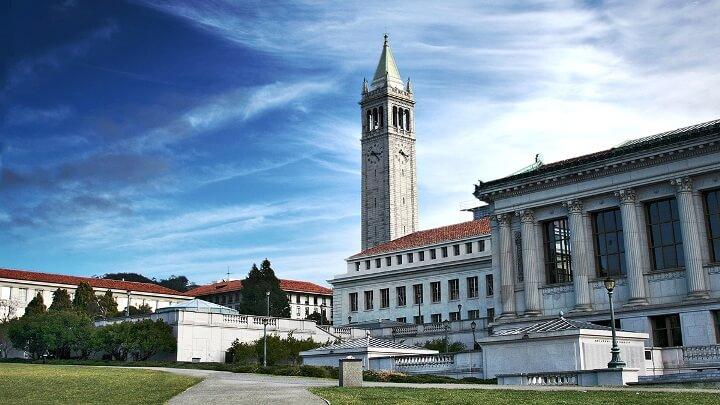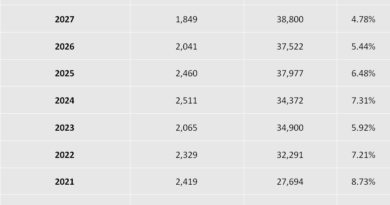List of U.S. Universities with No Application Fee | Cost-Saving Tips
A university application fee is a non-refundable charge that schools collect to process and review student applications. This fee helps cover the cost of evaluating your documents and reviewing your profile.
In the United States, the average application fee usually ranges from $50 to $150. Some top universities, like Harvard, Stanford, or MIT, may charge even more—up to $180 per application.
It’s important to remember that acceptance rates at these top universities are low, often 4–15%, meaning a student’s chance of getting accepted is roughly 10%. Because of this, most students apply to multiple universities—typically 5 to 10 schools—to increase their chances of admission.
Applying to several universities can quickly become expensive. Here’s an estimate of how much it might cost:
- 5 to 6 universities: $300 – $720
- 10 to 12 universities: $600 – $1,200
Admission in U.S. universities depends on more than just grades, GPA, or test scores. Universities also look for candidates who are a good overall fit, making it difficult to predict admission chances. For students from low-income families or international students, application fees alone can be a significant expense, especially when combined with costs for exams, visa processing, and travel.
To help students, many universities offer application fee waivers for those facing financial difficulties or meeting certain eligibility criteria. Some universities even do not charge any application fees, allowing students to apply without any upfront cost.
Why Some U.S. Universities Waive Application Fees
Many universities waive application fees to make education more accessible and attract talented students from around the world. Well-known schools, including Harvard, Yale, Carnegie Mellon, and MIT, offer fee waivers based on financial need or specific eligibility.
Here’s why universities waive application fees:
- To attract international students: Waiving fees encourages students from different countries to apply.
- To promote equal opportunities: Students from low-income families may not afford multiple application fees. Fee waivers help ensure fair access.
- To support first-generation college students: If you are the first in your family to attend college, some universities will waive your fee.
- To encourage early applications: Colleges sometimes offer fee waivers for students who apply by early decision or priority deadlines.
Here are some of the top universities in the USA without any application fee:
| College Name | State | Acceptance Rate |
| Auburn University at Montgomery | Alabama | 93% |
| Spring Hill College | Alabama | 59% |
| University of Alaska, Anchorage | Alaska | 67% |
| University of Phoenix | Arizona | 100% |
| Grand Canyon University | Arizona | 60% |
| Williams Baptist University | Arizona | 59% |
| Carrington College | Arizona | 16% |
| Arkansas Tech University | Arkansas | 96% |
| Henderson State University | Arkansas | 82% |
| Southern Arkansas University | Arkansas | 67% |
| Hendrix College | Arkansas | 53% |
| Dominican University of California | California | 96% |
| La Sierra University | California | 93% |
| Pacific Union College | California | 42% |
| Standbridge University | California | 20% |
| Minerva University | California | 4% |
| Colorado Technical University | Colorado | 100% |
| Colorado College | Colorado | 20% |
| United States Air Force Academy | Colorado | 14% |
| Colorado Mountain College | Colorado | |
| University of Saint Joseph | Connecticut | 80% |
| Full Sail Univeristy | Florida | 100% |
| Saint Leo University | Florida | 72% |
| Ave Maria University | Florida | 45% |
| Piedmont University | Georgia | 93% |
| Brenau University | Georgia | 87% |
| Agnes Scott College | Georgia | 67% |
| Berry College | Georgia | 62% |
| College of Southern Idaho | Idaho | |
| University of St. Francis | Illinois | 98% |
| Augustana College | Illinois | 68% |
| McKendree University | Illinois | 64% |
| Lake Forest College | Illinois | 59% |
| Rockford University | Illinois | 57% |
| Millikin University | Illinois | 54% |
| Illinois Wesleyan University | Illinois | 45% |
| Valparaiso University | Indiana | 92% |
| Manchester University | Indiana | 91% |
| Trine University | Indiana | 85% |
| Hanover College | Indiana | 84% |
| Indiana Wesleyan University – Marion | Indiana | 82% |
| Grace College & Seminary | Indiana | 81% |
| Saint Mary’s College | Indiana | 81% |
| University of Evansville | Indiana | 78% |
| Franklin College | Indiana | 71% |
| DePauw University | Indiana | 54% |
| Anderson University | Indiana | 53% |
| Wartburg College | Iowa | 99% |
| Grand View University | Iowa | 98% |
| Upper Iowa University | Iowa | 93% |
| Loras College | Iowa | 92% |
| Simpson College | Iowa | 89% |
| Northwestern College | Iowa | 87% |
| Graceland University | Iowa | 83% |
| Cornell College | Iowa | 81% |
| Mount Mercy University | Iowa | 79% |
| Luther College | Iowa | 73% |
| St. Ambrose University | Iowa | 73% |
| Buena Vista University | Iowa | 72% |
| Morningside University | Iowa | 71% |
| Drake University | Iowa | 64% |
| Grinnell College | Iowa | 13% |
| Baker University | Kansas | 92% |
| MidAmerica Nazarene University | Kansas | 73% |
| Thomas More University | Kentucky | 97% |
| Asbury University | Kentucky | 64% |
| Centre College | Kentucky | 54% |
| Berea College | Kentucky | 33% |
| Loyola University New Orleans | Louisiana | 88% |
| Tulane University | Louisiana | 15% |
| University of Maine | Maine | 96% |
| Saint Joseph’s College of Maine | Maine | 82% |
| Bates College | Maine | 13% |
| Colby College | Maine | 7% |
| Stevenson University | Maryland | 83% |
| Hood College | Maryland | 78% |
| Washington Adventist University | Maryland | 45% |
| United States Naval Academy | Maryland | 9% |
| Nichols College | Massachusetts | 88% |
| Lasell University | Massachusetts | 82% |
| Emmanuel College | Massachusetts | 81% |
| Fisher College | Massachusetts | 71% |
| Hampshire College | Massachusetts | 70% |
| Mount Holyoke College | Massachusetts | 38% |
| Smith College | Massachusetts | 20% |
| Wellesley College | Massachusetts | 14% |
| Grand Valley University | Michigan | 95% |
| Madonna University | Michigan | 93% |
| Michigan Technological University | Michigan | 88% |
| Albion College | Michigan | 83% |
| Ferris State University | Michigan | 81% |
| University of Detroit Mercy | Michigan | 80% |
| Kettering University | Michigan | 79% |
| Kalamazoo College | Michigan | 76% |
| Concordia University Ann Arbor | Michigan | 72% |
| Aquinas College | Michigan | 71% |
| Oakland University | Michigan | 70% |
| Adrian College | Michigan | 68% |
| Siena Heights University | Michigan | 67% |
| Alma College | Michigan | 66% |
| Rochester University | Michigan | 65% |
| Hillsdale College | Michigan | 21% |
| Metropolitan State University | Minnesota | 96% |
| St. Catherine University | Minnesota | 94% |
| The College of St. Scholastica | Minnesota | 94% |
| Bethel University | Minnesota | 91% |
| Hamline University | Minnesota | 90% |
| Saint Mary’s University of Minnesota | Minnesota | 89% |
| Augsburg University | Minnesota | 77% |
| Concordia College at Moorhead | Minnesota | 63% |
| St. Olaf College | Minnesota | 52% |
| Macalester College | Minnesota | 28% |
| Carleton College | Minnesota | 22% |
| Mississippi University for Women | Mississippi | 100% |
| Mississippi Valley State University | Mississippi | 51% |
| Alcorn State University | Mississippi | 25% |
| Fontbonne University | Missouri | 95% |
| Northwest Missouri State University | Missouri | 86% |
| Truman State University | Missouri | 80% |
| William Woods University | Missouri | 74% |
| Rockhurst University | Missouri | 69% |
| Avila University | Missouri | 60% |
| Drury University | Missouri | 59% |
| College of the Ozarks | Missouri | 15% |
| Carroll College | Montana | 73% |
| Nebraska Wesleyan University | Nebraska | 84% |
| Hastings College | Nebraska | 70% |
| Midland University | Nebraska | 67% |
| Chadron State College | Nebraska | |
| Southern New Hampshire University | New Hampshire | 96% |
| Saint Peter’s University | New Jersey | 91% |
| St. John Fisher University | New York | 68% |
| Hobart William Smith Colleges | New York | 57% |
| Skidmore College | New York | 23% |
| Ohio Northern University | Ohio | 73% |
| University of Dayton | Ohio | 62% |
| College of Wooster | Ohio | 54% |
| Kenyon College | Ohio | 31% |
| Denison University | Ohio | 17% |
| Oklahoma Wesleyan University | Oklahoma | 77% |
| Lewis & Clark College | Oregon | 75% |
| Reed College | Oregon | 27% |
| Albright College | Pennsylvania | 86% |
| Williamson College of the Trades | Pennsylvania | 30% |
| Central Penn College | Pennsylvania | 29% |
| Johnson & Wales University, Providence | Rhode Island | 84% |
| Coker University | South Carolina | 97% |
| Columbia College | South Carolina | 96% |
| Newberry College | South Carolina | 75% |
| Dakota Wesleyan University | South Dakota | 73% |
| Maryville College | Tennessee | 66% |
| The University of the South | Tennessee | 51% |
| St. Mary’s University | Texas | 89% |
| University of Texas Rio Grande Valley | Texas | 85% |
| Texas Wesleyan University | Texas | 62% |
| Baylor University | Texas | 51% |
| Trinity University | Texas | 28% |
| Southern Utah University | Utah | 80% |
| Champlain College | Vermont | 67% |
| University of Lynchburg | Virginia | 82% |
| Sweet Briar College | Virginia | 72% |
| Whitworth University | Washington | 87% |
| Pacific Lutheran University | Washington | 81% |
| University of Wisconsin, Milwaukee | Wisconsin | 88% |
| Milwaukee Institute of Art & Design | Wisconsin | 63% |
| Carroll University | Wisconsin | 58% |
| Central Wyoming College | Wyoming |
Tips to Avoid or Reduce University Application Fees
Applying to multiple U.S. universities can quickly become expensive. However, with the right approach, you can significantly lower your costs without limiting your options. Here’s a detailed guide:
- Check University Fee Waiver Policies Before Applying
- Most universities clearly list fee waiver eligibility on their admissions websites. The list is provided here, choose a university or college from this list. If your target institution is not listed here, then follow the given process, as those not listed here also provide fee waiver but not to all students.
- Look for criteria such as financial need, first-generation college status, or participation in certain programs.
- Request a Fee Waiver if You Qualify
- If fee waiver is not an option at your target university, you can often request one by emailing the admissions office. Craft your request properly.
- Provide details about financial difficulties or special circumstances. Universities are usually flexible for genuine cases.
- Use Fee Waiver Programs
- Organizations like the College Board (SAT/College Board fee waivers) and the Common App offer official fee waiver forms accepted by many universities.
- This is especially useful for students applying to multiple schools, as it reduces paperwork and cost simultaneously.
- Apply Strategically
- Focus your applications on universities where you meet eligibility for a fee waiver or no-fee option.
- Avoid applying randomly to schools with high fees unless you are certain of eligibility or strong chances of admission.
- Leverage Early Applications
- Some universities waive fees for students applying through early decision or early action programs. Admissions deadlines are normally in November and January. Early action starts in August/September. Look for list of colleges offering early action.
- Applying early can save you money and may even improve your chances of acceptance as you will have more time to prepare. The key is to start early, in May/June.
- Combine Application Planning With Budgeting
- Consider your total budget for standardized tests, visa fees, travel, and living expenses.
- By saving on application fees, you can allocate more resources to crucial parts of your admissions process, such as test preparation or visa documentation.
- Consult School Counselors or Education Platforms
High school counselors or online education guidance platforms often have updated lists of universities offering fee waivers. Here at College Portal, we have provided you the list of major universities and colleges. Look for more options. Talk to your school counselor. School counselors can provide practical advice on which schools are most accessible financially and academically.
Key Takeaway:
Application fees are just one part of the cost of studying in the U.S., but with careful planning and awareness of fee waivers, students—especially international and low-income applicants—can save hundreds of dollars. Start your applications early, research eligibility criteria, and use official waiver programs to maximize your opportunities without overspending.



